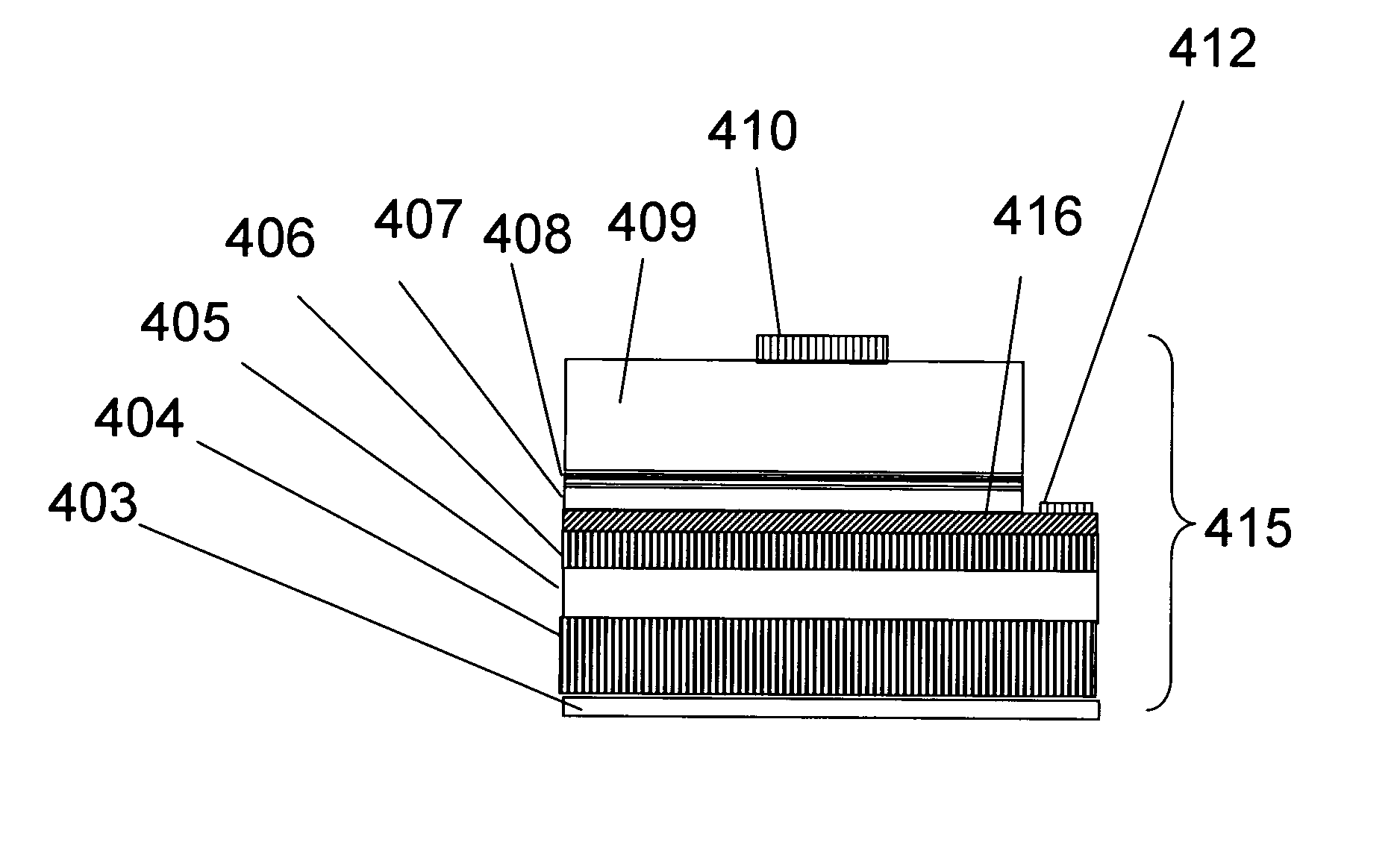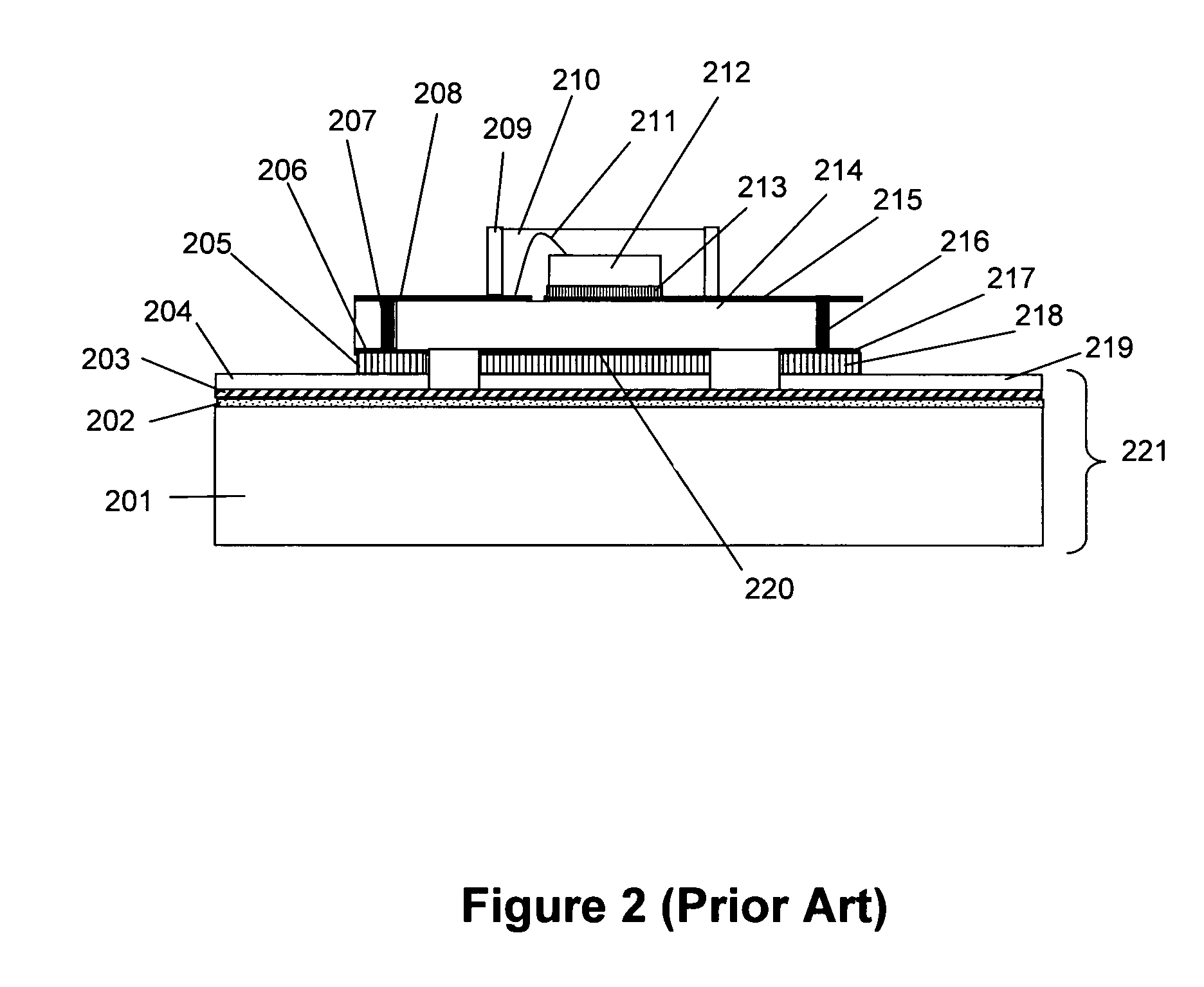Electrically isolated vertical light emitting diode structure
a vertical light and diode technology, applied in the field of vertical light emitting diodes and modules, can solve the problems of poor thermal performance of this kind of led grown on sapphire wafers, inability to drive this chip harder without significantly degrading lpw, and show a marked drop in efficiency, so as to improve thermal and/or electrical conductivity and low cost
- Summary
- Abstract
- Description
- Claims
- Application Information
AI Technical Summary
Benefits of technology
Problems solved by technology
Method used
Image
Examples
Embodiment Construction
[0100]A key objective of the present invention is to provide a high luminous output semiconductor light emitting device while still maintaining high wall plug efficiency. The invention can be incorporated in a light emitting device based on any semiconductor material system. Examples of suitable semiconductor material systems include InGaN, InGaP, InGaAs, InP, or ZnO, but are not restricted to these. To illustrate the invention, a GaN based light emitting diode (LED) having an epitaxial layer formed on a sapphire substrate is used as an example. However, the application of the present invention is also not restricted to epitaxial layers grown on sapphire, and may include Si, SiC, Ge, native free-standing GaN, AlN, LiAlO or any other growth and substrate technology.
[0101]Another object of the invention is to make use of LEDs having a vertical current path, where the electrical current through the p- and n-doped materials is applied through substantially parallel contacts that allow t...
PUM
 Login to View More
Login to View More Abstract
Description
Claims
Application Information
 Login to View More
Login to View More - R&D
- Intellectual Property
- Life Sciences
- Materials
- Tech Scout
- Unparalleled Data Quality
- Higher Quality Content
- 60% Fewer Hallucinations
Browse by: Latest US Patents, China's latest patents, Technical Efficacy Thesaurus, Application Domain, Technology Topic, Popular Technical Reports.
© 2025 PatSnap. All rights reserved.Legal|Privacy policy|Modern Slavery Act Transparency Statement|Sitemap|About US| Contact US: help@patsnap.com



